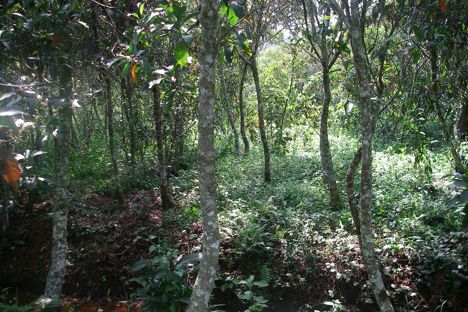
Branching out: the story of Fever-Tree
It took over a year of testing and a trip to Congo to get the recipe right, but now Fever-Tree has managed to corner the market for top quality tonic. Discover the company’s origins and why its tonic water is the mixer of choice for bartenders and drinkers alike.
Branching out: the story of Fever-Tree
It took over a year of testing and a trip to Congo to get the recipe right, but now Fever-Tree has managed to corner the market for top quality tonic. Discover the company’s origins and why its tonic water is the mixer of choice for bartenders and drinkers alike.
View more from this series:
ProducersIf you ordered a gin and tonic in a bar ten years ago, you’d almost always get what you’re given. Even if there were a few different gins to choose from, there simply weren’t any good quality tonic waters or mixers for bartenders to offer their customers.
Fast forward to today and there are dedicated bars, specialist shops and even festivals celebrating the UK’s newfound love for everything gin. While the spirit finds its way into exotic cocktails, it’s still the G&T that we turn to the most. And with a greater variety of gins, we now have top quality tonics to choose from – something Fever-Tree started back in 2005.
It all began when Charles Rolls – the man behind Plymouth Gin – teamed up with advertising executive Tim Warrillow to create a mixer worthy of all the new, exciting gins cropping up across the UK.
‘When Charles and Tim discovered that the majority of mixers were full of preservatives, cheap lemon aromatics and artificial sweeteners such as aspartame and saccharin, they set out to change the status quo,’ says Saskia Meyer, marketing director for Fever-Tree. ‘Determined to create the world’s first all-natural tonic water that complemented the spirit rather than overpowered it, they embarked on a series of trips to seek out the highest quality ingredients. After all, if three-quarters of your drink is the mixer, it should be just as good quality as the spirit it’s paired with!’
It took the duo fifteen months to come up with their tonic. Initially, long days were spent in the British Library researching quinine sources from as far back as 1620, but it was a trip to the last remaining plantation of cinchona Ledgeriana trees (colloquially known as fever trees) on the Rwanda-Congo border that held the key to the tonic’s success. ‘These trees produce the purest quinine in the world, which is a key ingredient in tonic water, so for Charles and Tim there was no choice but to work with that particular plantation,’ says Saskia. ‘The gentle bitterness of the quinine is blended with spring water and eight botanicals such as marigold and Tanzanian bitter orange to create a unique, fresh tasting tonic water, crafted to enhance the flavour profiles found in the finest gins. It has been this obsession with creating the very best tasting mixers that has resulted in an award-winning range that is now available in over fifty-five countries worldwide.’
Since the launch of Fever-Tree’s Indian Tonic in 2005, the mixer has evolved from an afterthought to something we treat with the same respect as spirits and drinkers asking for specific brands in bars. ‘People don’t want to spend money on a quality gin just to drown out the flavours with artificially-sweetened tonic water,’ says Saskia. ‘Our tonic range now includes six different varieties, from our innovative Naturally Light Tonic to flavoured tonics including Elderflower, Mediterranean, Lemon and most recently our pink, Aromatic Tonic.From the Congo to the Ivory Coast and most recently Madagascar, each new Fever-Tree mixer has taken Charles and Tim to some of the most remote parts of the world in search of the highest quality ingredients.’
The flavoured tonics were developed to complement an ever-increasing array of gins appearing in bars and shops which were beginning to challenge the traditional conceptions of what gin should taste like. ‘If gins were moving away from the accepted definition of the spirit with the addition of things like saffron, lemongrass and tea, then why couldn’t we do the same with tonic water?’ says Saskia. ‘Our newer varieties all include the best quinine but incorporate further botanicals that complement certain flavours in gin.’
Fever-Tree has certainly changed the way many people drink gin and tonic in the past eleven years. We previously gave little or no thought to what the mixer should be, but nowadays most bars offer a choice between several brands. Many argue that the company helped drive the boom in craft gin; just look at Sipsmith, the company that are often credited with starting the whole movement – they launched in 2009, four years after Charles and Tim unveiled that first bottle of tonic water.


